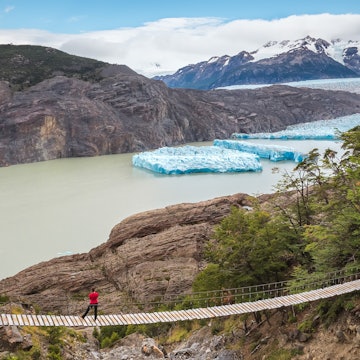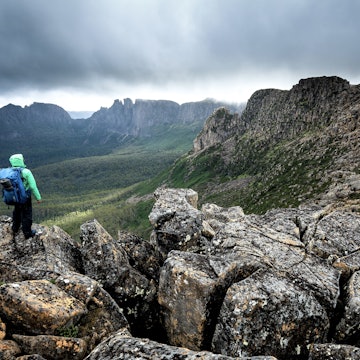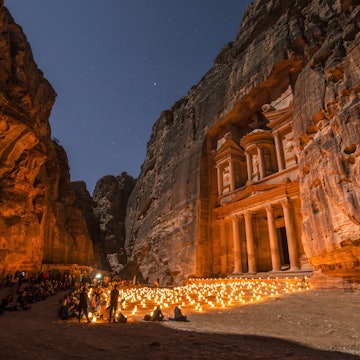
The best places to visit in Chile, from urban glam to natural highs

Aug 26, 2023 • 7 min read

Plan your Chile itinerary while strolling the streets of Santiago © Lucy Valdes / Getty Images
With the soaring Andes to the east, the pounding Pacific to the west, Patagonian fjords down south and an immense desert up north, Chile is the kind of diverse natural playground that adventure lovers dream about.
Yet, this thin South American country also boasts vibrant cities, enigmatic islands and rolling vinelands dotted with world-class wineries. Below, we look at the 10 top places you won’t want to miss.
1. San Pedro de Atacama
Best place to access the Atacama desert
When the green oasis of San Pedro appears on the otherwise barren horizon of the Atacama Desert it feels, at first, almost like a mirage. Then, as you begin to navigate the narrow streets of this small adobe village, you realize that those spindly chañar trees hide the kind of resort town travelers dream about, catering as much to well-heeled jetsetters as it does to scruffy backpackers.
Just beyond San Pedro are lunar-like valleys, snow-capped volcanoes, soaring sand dunes, ancient rock art, steamy hot springs and flamingo-filled lagoons. You could spend an entire week here and never run out of activities. Those who like to tick off superlatives can’t miss the world’s loftiest geysers and largest ground-based astronomy facility.
Local tip: Always be sure to plan your excursions with the altitude in mind, saving attractions higher up in the Andes (like the El Tatio geysers) for your final days.

2. Rapa Nui (Easter Island)
Best place to learn about Polynesian culture
This tiny volcanic outcrop in the middle of the vast Pacific has an outsized reputation around the world thanks to the 887 monolithic human statues (known as moai) that guard its azure shores. The mystery of how the ancient Rapa Nui people were able to build and move such massive structures has fascinated travelers for decades.
Yet, the island is more than just an open-air archeology museum. You can spend an evening listening to Polynesian music at a local dance show, snooze under the palm trees at Anakena Beach and dine on tuna ceviche at the restaurants in Hanga Roa – all of which are perfectly aligned for tangerine sunsets over the Pacific.
Local tip: Three days is the absolute minimum amount of time you'll need to see everything. It's far more recommended that you stay up to a full week to not only see the archeological sites but also snorkel, swim and enjoy the Polynesian culture.

3. Santiago
Best place to go to a party
Chile’s frenetic capital is a cultural powerhouse whose historic center is filled with world-class museums, stately theaters and palm-lined plazas. Key neighborhoods for travelers include Barrio Yungay (for street art), Barrio Italia (for shopping), Lastarria (for strolling), Providencia (for sleeping) and Vitacura (for dining). Come nightfall, neighborhoods like Bellavista and Barrio Brasil explode with energy as Chileans party until sunrise at clubs blasting everything from Latin trap to K-pop, EDM and Reggaeton.
Santiago makes a great base as there’s plenty to do within an hour of city limits. You can raft whitewater in Cajón del Maipo, swirl Cabernet in the Maipo Valley or snowboard at some of the biggest (and best!) ski resorts in the Southern Hemisphere.
Local tip: LGBTIQ+ travelers should head to Bombero Núñez street, which is lined in bars, clubs and performance venues where drag queens entertain into the wee hours of the night. When going out to dance, don't even think about showing up before midnight!
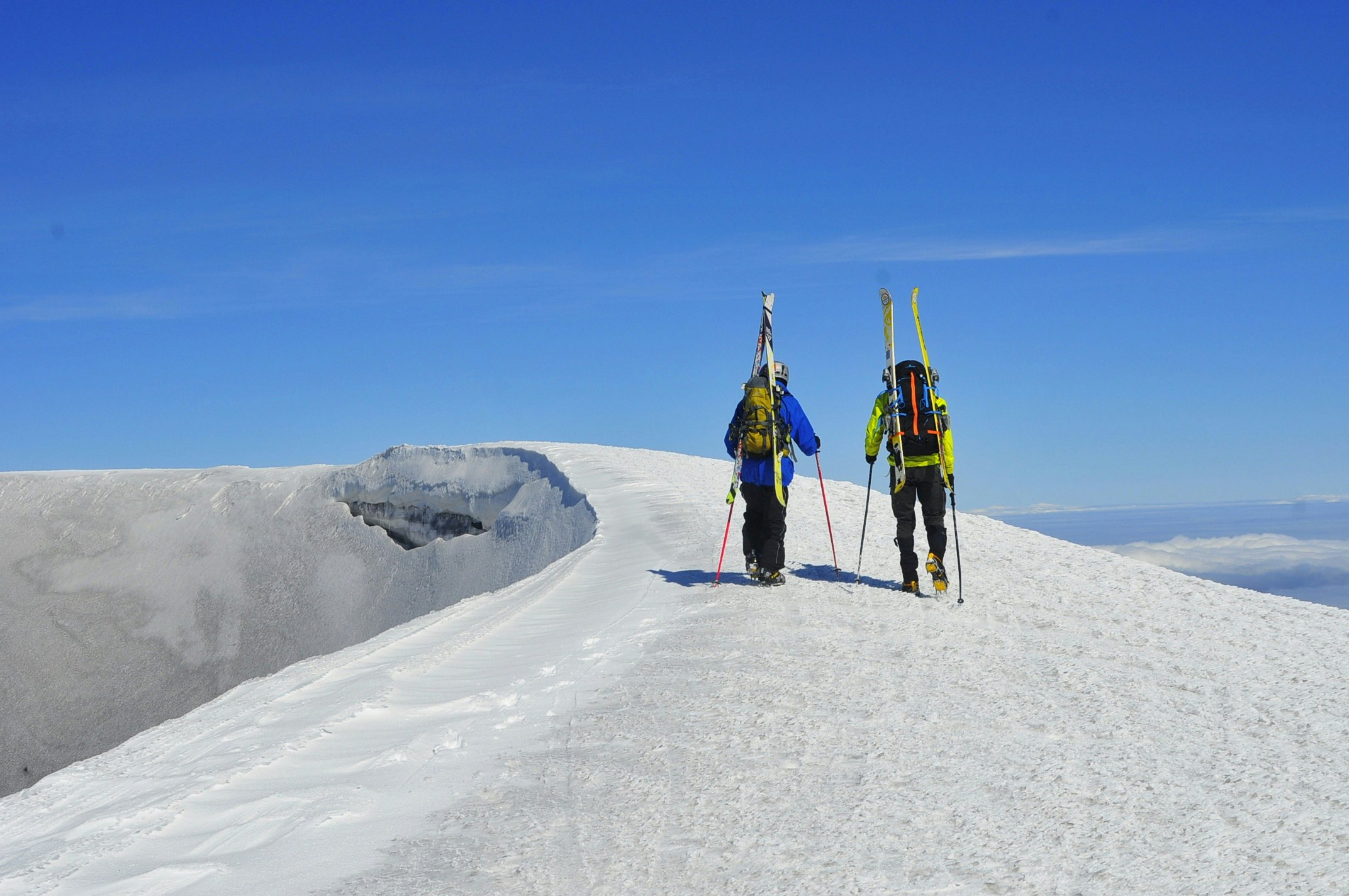
4. Pucón
Best place to hike and ski a volcano
When it comes to adventure-filled outdoor fun, few places can match Chile's breadth of options – this woodsy resort village in Chile’s Lake District is one of South America’s most alluring adventure hubs. Those with a head for heights can strap on crampons and climb to the top of an active volcano or strap on boots and ski back down it. Abandon urban stresses and hike until you're amid ancient araucaria trees on an Andean hilltop or bathe in a hot spring tucked into a temperate rainforest. Hire a kayak and paddle yourself across an emerald lake to a remote cabin or raft down raging whitewater towards a craft brewery. Located in the spiritual heartland of the Mapuche, it’s also the best place to learn about the culture of Chile’s largest Indigenous group.
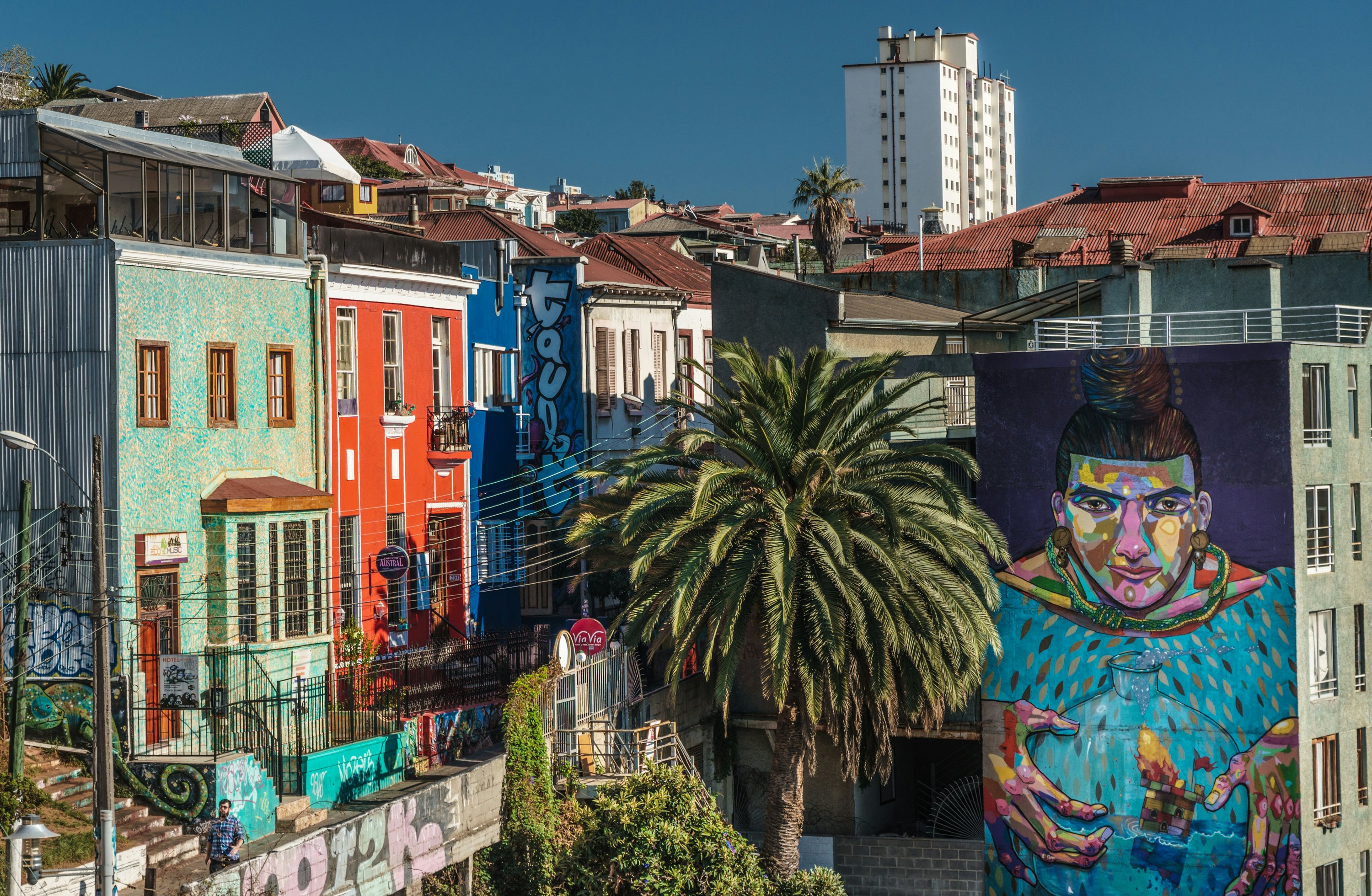
5. Valparaíso
Best place for sweeping views and street art
This scrappy seaport west of Santiago has a way of capturing travelers’ hearts (and upending onward travel plans). Maybe it’s the sweeping views you get from hotels and hostels that cling off the edge of the city’s 42 hills? Perhaps it’s the narrow lanes of Unesco-listed architecture, which are covered in prismatic street art? Or could it be the 100-year-old funiculars, which transport visitors up into the clouds? Whatever the reason, Valparaíso has an unkempt charm that can become oddly addicting.
Local tip: Cerro Alegre and Cerro Concepción are the safest and nicest hills to use as a base for exploring Valparaíso. They're also the most colorful with some of the city's most extravagant murals.

6. Aysén
Best place to get away from it all
Are you rich in time and patience? The remote region of Aysén offers the kind of untouched landscapes and clock-stuck towns that are vanishing elsewhere on earth. There’s only one real road here, the Carretera Austral, and a lot of it remains unpaved, particularly the further south you tread. At points, there is no road at all and you must instead drive onto a car ferry. That’s the tradeoff of visiting the lesser-seen Patagonia, but the rewards are many: vast mountain ranges, deep fjords, loamy rainforests and huge ice fields of glistening glaciers.

7. The Colchagua Valley
Best place for wine
No wine region in Chile can compete with the star power (and tourism infrastructure) of the Colchagua Valley. Centered around the small city of Santa Cruz, about three hours south of Santiago, it boasts dozens of high-end resorts, fine dining restaurants and, of course, vineyards – all catering to international wine lovers. The wineries themselves are true works of art ranging from grand colonnaded estates to ambitious glassine tasting rooms stuffed with million-dollar paintings. Red wines such as Carmenere and Cabernet Sauvignon shine in Colchagua, though most places also serve whites from their vineyards near the Pacific Coast.

8. Chiloé
Best place for mythology and ghost stories
Ever heard of a potato? Of course you have. Well, the common spud actually traces its origin to this peanut-shaped island off the coast of northern Patagonia. Culinary travel based around the island’s prismatic native potatoes thrives in the island’s capital, Castro, which is also known for its colorful stilt homes (called palafitos).
But everyone's favorite carb isn't the only reason to visit. You can also hike on coastal trails to remote beaches, seek out Unesco-listed wooden churches or dive into the island’s unique mythology of ghost ships and forest gnomes.

9. Parque Nacional Torres del Paine
Best place for hiking
Search the internet for images of Patagonia and half of them will be from this one national park in southern Chile, whose iconic granite spires have come to represent the entire region. Most visit to either hike along the five-day W Trek or sleep in one of the park’s luxurious all-inclusive adventure lodges, which offer daily guided excursions. With massive glaciers, turquoise lakes and the highest concentration of pumas anywhere on earth, you can spend days here and never run out of places to explore.
Local tip: To get off the beaten path, intrepid hikers should consider doing the Dientes Circuit on nearby Isla Navarino instead of the W Trek. This remote 5-day 53km (33-mile) route is the southernmost hiking circuit in the world.

10. The Elqui Valley
Best place for stars and pisco
This fertile valley on the southern fringe of the Atacama Desert is the epicenter of Chile’s pisco industry, with a half-dozen distilleries where you can learn about the nation’s revered brandy (as well as toss back a few sours). There are also craft breweries and boutique wineries where you can stock up on supplies for sun-drenched picnics alongside the Elqui River. Come nightfall, this International Dark Sky Sanctuary boasts some of the clearest skies on earth. Several hotels offer glass roofs and telescopes so you can probe the night skies just as some of the world’s top astronomers do in the Valley’s multimillion-dollar observatories.
Local tip: At between 1650 and 2206 meters (5413-7237ft) above sea level, Viñedos de Alcohuaz is one of Chile's highest-altitude wineries. It produces some truly experimental (and spectacular) bottles, and has a Bond-like underground tasting room.







